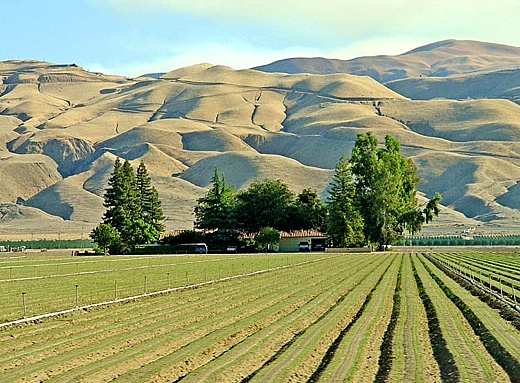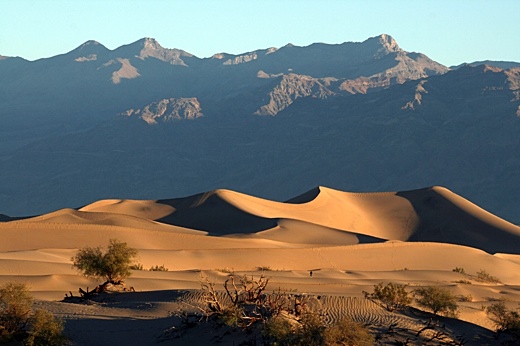SUBHEAD: How 13 events of the decade made us the post-traumatic-stress-disorder nation.
By Adele M. Stan on 30 December 2009 in AlterNet -
(http://www.alternet.org/story/144791)
 Image above: Baby New Year in the arms of Father Time.
Image above: Baby New Year in the arms of Father Time.
It's been one helluva decade, even though we've reached the end without knowing what to call it. Some have tried "
the aughts," others the "double-Os." I'm content to simply call it over. To mark its location in the great march of history, I've taken to calling it the millennial decade, after the great numerological transition it heralded. Yet for describing its character, nothing comes closer than the Decade of Trauma -- American trauma, that is.
Here in the home of the brave, we've endured a decade that shattered nearly every notion of what it meant to be an American, whether you live on the left or the right. And so we shout. Or hide. Or startle too easily.
In America today, it seems we all have a touch of post-traumatic stress disorder, as evidenced by our increasingly vitriolic political environment, where reality is denied and histrionics run riot. Anger, we're told, is the
natural reaction to trauma; in people with PTSD, the anger is out of control. ]
]By that measure, the millennial decade has brought us 10 years of PTSD politics -- with no end in sight.
From the Tea Party madness, the unwillingness of Republicans in Congress to vote for any piece of legislation drafted by Democrats, the misuse of the filibuster in the Senate to all but break the institution, and the outsized rage on the left toward the Obama administration for simply behaving as politicians do, our national politics have moved beyond the bounds of extreme partisanship into the realm of mental illness.
This breaking of the national psyche was bound to happen; it's been decades in the making. American exceptionalism -- the idea that we are somehow better and more blessed than any other people on the face of the earth by dint of our own hard work, ingenuity, innate goodness and superior democracy -- was bound to fail as our nation, like every other before it, found itself caught in the grinding wheels of history.
Rooted in denial, the doctrine of American exceptionalism edits out of the American story the sins against humanity that created our nation: the genocide of the people who were here before the Europeans came, and the building of the nation on the backs of involuntary laborers who were tortured, abused and even killed for their trouble.
Once you ditch that, it becomes easier to look past the other unpleasant realities of our history, be it our neo-colonialism throughout the world, which helped to build our economy, or the enduring practices of racism and sexism.
But denial almost invariably leads to trauma, when on one day, or in one decade, the decay that denial fostered summons home the demons set loose through willful ignorance to do their fright dance before one's very eyes.
The 2000 election, 9/11, Enron and WorldCom, Afghanistan, Iraq on a lie, Abu Ghraib, the USA Patriot Act, Guantánamo, Katrina and near economic collapse: each of these -- and many, many others -- challenged our sense of national identity, giving the lie to who we thought we were, and compromising a sense of safety, however delusional, that we once enjoyed. No longer were Americans exempt from the perils that face other nations.
Even the decade's great culminating moment, the election of Barack Obama, beautiful though it was, rocked the nation, provoking revulsion on the right and an unsustainable ecstasy on the left -- extremes of emotion that do not speak well to the emotional stability of a people.
The decades that led us here were fraught with their own traumas. The '60s were convulsive; the '70s unnerving. The '80s and '90s brought a backlash against the changes wrought by the two previous decades.
People of my generation saw, as children, three of our greatest national leaders gunned down. We saw dogs and fire hoses turned on people peaceably assembled to petition the government for redress. Women took to the streets, demanding a reordering of society, and ultimately, a reconfiguration of the family.
We watched our nation at war in close-up video while young people filled the streets in protests. Gay people made themselves visible in vigils and rallies shown on the nightly news and in adorably cute sitcoms. We viewed it all in wood-paneled family rooms, our Swanson dinners before us on TV trays.
We saw a president resign in disgrace, and the taking of American hostages by an Islamic state. Yet, despite the upheaval, at the passing of each crisis we managed to stuff the genie back in the bottle -- or so we thought. Our belief in our democracy somehow prevailed in our thinking. Civil rights, centuries too late, were eventually won through the legislative process. The Vietnam War ended. Women emerged from the confines of the home. The assassination of one president and the resignation of another were succeeded by orderly transfers of power.
History being history, the story of the millennial decade is, in many ways, about the very same things that characterized the decades that ushered it in: racial strife, the renegotiation of gender roles, our nation's place in the world, declining economic fortunes, ugly wars and unconstitutional actions by the government. But this decade offered one critical difference; the disorderly world was no longer contained within a glass tube in a wood-paneled bunker. It sneaked up behind us and whacked us in the head.
The Numerology of the End-Times
It didn't help that the 2000s came upon us with a handicap conferred by Western numerology. Throughout the Christian Bible,
three is a heavy number, and here we are, at the dawn of the Third Millennium, measured from the presumed date of the birth of Jesus the Christ, who is one-third of the Holy Trinity, who died at the age of 33, only to rise again on the third day.
It really doesn't matter what religion you were raised in, or whether you were raised in one at all; America is culturally Christian, and this numerology is written into the DNA of all Christian nations. Hence the popularity of religio-conspiracy tales such as The DaVinci Code and "
National Treasure," or the apocalyptic fantasies of the
Left Behind book series.
The new decade made its entrance under the threat of a terrorist act planned for the United States. Two weeks before New Year's Eve, authorities arrested Ahmed Ressam at a Canadian border crossing, where customs officials found bomb-making materials in his car. Ressam's target, intelligence officials said, was Los Angeles International Airport. Other cites, it was said, were in the terrorists' sights, as well. The
Millennium Plot, they called it.
Celebrations for the great turning of the millennial wheel took place amid a backdrop of jitters; city officials across the nation talked of suspending New Year's events. In Washington D.C., a debate took place over whether a planned fireworks display was appropriate, in light of the threat.
The brave decided to party like it was 1999.
Win, Lose or Draw
The millennial decade got underway in America in the midst of a presidential campaign. Democrat Al Gore and Republican George W. Bush, both scions of political families, faced off in a hard-fought contest that appeared to end in a draw. When the polls closed, the electoral college map featured several states that offered no clear winner, an outcome that had never occurred in the television age.
The drama dragged on for more than a month, culminating in an action by the Supreme Court that history will likely judge to have been unconstitutional.
The impact of this election on the American psyche was, I believe, profound; regardless of one's political orientation. A large part of the narrative of American exceptionalism hinges upon our belief that we are a self-governing people. However weak we may have felt in the face of corporate malfeasance or government overreach, we still clung to the notion of our collective power as a people through the use of the ballot box.
After the 2000 election, the ballot box was exposed as an arbitrary measure, its verdict determined by hanging chads and poorly organized ballots. Still, however imperfect, it was the expression of our will -- until the Supreme Court stepped in and ordered a halt to the recount taking place in Florida, the last state to determine a winner.
The Supreme Court essentially overruled the State of Florida's right to see its disorderly election to a conclusion, throwing the election to Bush and stomping on the states' rights conservatives so championed until the high court intervened to grant them the presidential candidate of their choice. A subsequent study found that Gore won the popular vote by more than 500,000 votes.
Powerlessness, writes Dr. Judith Herman of Harvard Medical School, is the central experience of trauma. The source of our power as a people is our electoral system, which was revealed to be either broken or a joke. Even those who supported Bush likely experienced something deeply unsettling in the six weeks before the Supreme Court rendered its verdict, when Republican congressional staffers were sent to the Sunshine state to disrupt the recount with riotous tactics, and chaos reigned in the political sphere.
When the decision finally came on December 12, 2000, it came not from the people, but from the very judiciary the right so despises.
And we weren't even through the decade's first year.
Terror From the SkiesIf the American people weren't traumatized by the breakdown of our democracy in 2000, they surely were by the events of September 11, 2001, when four commercial aircraft were commandeered by al Qaeda terrorists, successfully taking down the World Trade Center in New York City -- the leading symbol of America's domination of the global economy -- and leaving a gaping hole in the Pentagon, the symbol of America's military might. The fourth plane, which crashed in a Pennsylvania field, was apparently headed for the U.S. Capitol building, the symbol of America's representative democracy.
More than 3,000 people were killed in the attacks. In New York, bodies tumbled from the sky as workers in the Trade Center towers leaped to their deaths in order to escape the flames.
Any people subjected to such a fearsome sight would rightly be traumatized. But America's trauma was exacerbated by the myth of our own exceptionalism -- the belief that such things don't happen here -- as well as the media's endless repetition of the video loops of the planes hitting the Trade Center towers.
In the mind of a traumatized person, the reliving of traumatic events often recurs in regular flashbacks, keeping alive the terror and sense of powerlessness caused by the original event.
In the wake of 9/11, we didn't need our own minds to hit the replay button; the media did it for us, setting us up for a decade of unconstitutional horrors that went virtually unchecked with the acquiescence of our traumatized populace.We didn't think twice when our nation invaded Afghanistan; after all, the reasoning went, al Qaeda, a non-state actor, was based there.
We barely blinked when the USA Patriot Act -- a legislative repudiation of the Bill of Rights -- passed with the votes of Democrats and Republicans alike, allowing the federal government to detain, without charges or warrants, virtually anybody it cared to, all in the name of national security. Only one Democratic senator voted against the bill: Russell Feingold of Wisconsin.
In 2002, amid revelations about the role of the Roman Catholic Church in a massive cover-up of sexual crimes against children by a number of priests, and the Enron and WorldCom corporate scandals, the Bush administration began banging the drum for an invasion of Iraq. Iraq possessed weapons of mass destruction, we were told, that an unscrupulous dictator was bent on using against us.
Very few in the political opposition actually believed the claims made by President Bush and Secretary of State Colin Powell in early 2003, but almost no one dared to defy them. In March, the United States invaded Iraq, with the permission of congressional majorities in both political parties. Only a few would dare, in the wake of the 9/11 attacks on America's "homeland," to risk looking like wimps.
Suffering neglect at the hands of one's caretaker, psychology textbooks tell us, can sometimes result in psychological trauma. If you view our elected officials as caretakers of a sort, we were indeed neglected.
Our own dissociation from the passage of the USA Patriot Act speaks to our collective trauma; even those of us who were hell-bent against it failed to organize a fight. As our constitutional rights were put through the shredder, we threw up our hands.
It wasn't until the country went to war that the left organized massive protests. But the media's failure to fully report on the widespread anti-war sentiment served to further demoralize many. The only ones not looking away, it seemed, were the Bush administration and the organs of the permanent government, such as the FBI and the National Security Agency.
Play It Again, Uncle Sam
April 2004 brought us the horrifying images of prisoner torture--some of it highly sexualized -- by U.S. soldiers and contractors of detainees held at the U.S. prison at Abu Ghraib in Iraq, and the destruction of any real claim to America's moral superiority among nations. Photographs leaked to the news media included one of a pyramid of naked male prisoners and one of a naked male prisoner with a
leash around his neck, held by a small, female soldier, Private Lynndie England. One of the most infamous photos depicted a
prisoner outfitted in a hood and made to stand on a box with wires attached to his extremities, part of a psychological torture scheme to make him believe he was about to be electrocuted.
America's sins were now exposed to the world, and to her own people, compounded by the fact that our leaders lied to us with assurances that the U.S. did not torture its detainees.
We were now completely unmoored from the safe harbor of our belief in our fundamental goodness as a nation, with no one trustworthy in charge of anything that mattered. We were utterly abandoned.
In the midst of another presidential election, we grappled with this truth. With the 9/11 attacks still fresh in our minds, we remained a traumatized people, now broken and stripped of our identity.
In its bid to retain power, the Bush administration played what the media termed the politics of fear or the politics of terror, but in truth it was the politics of trauma. The 9/11 attacks were invoked repeatedly, most notably at the Republican National Convention, held in a locked-down New York City, where an entire evening was devoted to a 9/11 tribute designed to manipulate convention-goers and TV viewers into seeing the current president as heroic in the face of attacks whose probability he had been warned of, a warning he did nothing to address at the time he received it.
At the time, I chafed at the media's description of Bush's campaign tactics,
writing:
The politics of fear is based around ideas such as these: that homosexuals are out to recruit your children, that God will punish the nation for its sins, that the family is broken when women have power, that membership in the United Nations demands the surrender of our nation's sovereignty. In short, the politics of fear exploits the trepidation innate in humans when facing change of any kind, and tweaks it to a twitchy pitch in times of great social change.
The politics of trauma is another beast entirely, based as it is, not on fear of the unknown, but the exploitation of something atrocious that has already occurred, the fear that it will happen again, and the psychological toxins produced by experiencing the atrocity.
Put another way, our 9/11 trauma was invoked as a means of disempowering us. And it worked -- well enough, anyway.
Just as the media looked away when hundreds of protesters were rounded up in New York that week and
illegally detained in a makeshift jail on the Chelsea Pier, they also lost their nerve after the election returns rolled in, leaving behind their own reports of shenanigans at the polls and in the counting-rooms of Ohio, where another election may have been stolen. Had Ohio been called for Democratic candidate John Kerry, he would have won the election.
Even Democrats wanted no part of an inquiry into the long lines at polling places in Ohio that served African-American neighborhoods, or the eviction of the media from a county building where votes were being counted. Only Rep. John Conyers, D-Mich., dared to
conduct an inquiry, which was promptly ignored.
Such was the defeat of the American people that we allowed this to happen with barely a passing glance. This is the way traumatized people behave at the hands of an abuser -- by playing dead, dissociating, or slipping into denial at the injustice that has been done to them.
By the year's end, reports began to surface of
torture at the U.S. prison camp at Guantanamo Bay, Cuba. But George W. Bush and his
meglomaniacal Vice President Dick Cheney would have another four years to prostrate a nation that was already on its knees.
Hurricane Katrina and the Lie of Racial Comity
One tenet of American exceptionalism is that it claims to worship the heterogeneous nature of our society, and the belief that anyone can make it in our nation if he or she just tries hard enough. Along the way, after the passage of civil rights legislation in the 1960s, we told ourselves that we were on the path to redemption for a past rife with racism.
After Hurricane Katrina barreled up a man-made waterway in New Orleans on August 29, 2005, yet another myth -- one fundamental to our own self-concept -- was battered. Despite warnings that the levies protecting one of America's oldest cities were about to give way, the president looked away. The federal government failed spectacularly to respond to a city under water, a city inhabited largely by African Americans.
The ugliness of our nation's racialized past is never far from the surface in New Orleans, an ancient trading post that was a major
port of entry for African slaves, who were sold at its markets. The rhythms of New Orleans are distinctly African, and it is the
birthplace of America's highest form of indigenous music -- jazz. The religion of the place is laced with
voodoo, a syncretization of West African and European Christian beliefs. For these reasons -- all reminders of the involuntary labor that built this nation -- more than a few wouldn't mind seeing New Orleans fall into the Gulf of Mexico.
Within days after Katrina hit, it became apparent that something was terribly wrong. There was no food or water in the
Morial Convention Center, where as many as 20,000 had gathered for refuge at the direction of city officials. Television captured the desperation: children begging for help, mothers begging for food for their children. If national television crews could find their way there, we wondered, then why couldn't federal emergency responders?
You know the rest of the story. I retell just enough to remind you of what it felt like to watch that: helpless. It's hard to imagine a sensation more disempowering than helplessness. And powerlessness, you'll recall, is the central experience of trauma.
We'll never know how many people died on the Gulf Coast as a result of Hurricane Katrina: many bodies are believed to have washed out to sea. In February 2006, documented deaths were
tallied at 1,300, with another 2,300 reported missing.
Economic MeltdownAn ancillary to the doctrine of American exceptionalism is the belief that every generation of Americans will do better economically than their parents did before them. It's a ridiculous notion if you really think about it -- the cycles of economic history utterly defy it -- but one that enables the American propensity for building economic bubbles. In the 2000s, we built a big one, and today we suffer the effects of its bursting with a mighty pop.
The apparent prosperity of the early years of the decade was built on a lot of fake money (what we call credit), much of it invested in real estate, which was said never to lose value. (Did anybody bother to phone back to the '80s, when real estate values took a dive?)
The deregulation of the financial industry, begun under President Bill Clinton, encouraged the creation of all manner of financial instruments -- some that were gambles animated by complicated formulas, others that allowed you to use the equity in your home as a line of credit, still others that were mortgages with adjustable rates on homes granted to buyers who could not afford them. The junky mortgages were then unloaded by their creators, lapped up by other financial entities eager to take on those debts for their promised returns.
By 2006, housing values began to dip, and the returns on that debt began to slide. By 2007, the housing bubble was on the verge of bursting. In 2008, in the midst of yet another presidential campaign, it did.
An Historic Vote
And what an election it was. The contest for the Democratic nomination lasted far longer than any in recent memory, with the two candidates left standing after Super Tuesday each representing a potential "first" for the country: If the Democrats won, the next president would either be a white woman or an African-American man. The contest drew a division between the party's two most stalwart activist constituencies, the feminist and civil rights movements. Many black women felt themselves both ignored and torn between the two candidates.
When Barack Obama emerged as the Democrats' pick, American exceptionalism both found expression in his story and a test in his candidacy. The narrative of American exceptionalism, begun in Alexis de Tocqueville's Democracy in America, hinges on the idea of our nation as one hospitable to immigrants. Yet Obama's exotic name provoked an hysterical conspiracy theory based on right-wing allegations that he was not born in the U.S., and was therefore ineligible for the presidency. This theory lives on today, even though authorities and reporters have authenticated his Hawaii birth certificate.
In September 2008, the stock market crashed, all but ensuring the election of America's first black president, as his Republican opponent, John McCain, was associated in the public mind with all that had gone wrong under George W. Bush. Our traumatized republic had at last reached its tipping point. While Obama's core supporters were wild about him, his majority was secured by many who voted for him reluctantly.
Before we had an African-American president, it was easier to believe we had, as a nation, largely put that old racist past to bed. Obama's election hit the nation like a thunderclap, shaking the nuts from the trees. For those on the right, the election of America's first black president was yet another trauma added to the string that had piled up over the course of the decade. On the left, the elation felt by a constituency traumatized by the authoritarian and oligarchical excesses of the Bush years was bound to deflate when the new president was revealed to be both human and a politician.
Take a Deep BreathSo, here we find ourselves, on the brink of a new decade, traumatized, at odds with each other, constituencies shattering within constituencies. Just when you thought the Republican Party could move no further to the right, the Tea Party movement emerges, its adherents full of rage and convinced that their way of life will be brought to an end with the election of the new president, whom they see as foreign and threatening. And so he is given the same attributes as threats of the historical past: He's a socialist, a fascist, a communist.
"The thoughts or beliefs that people have to help them understand and make sense of their environment can often overexaggerate threat," reads a brief from the National Center for Post-Traumatic Stress Disorder. "Often the individual is not fully aware of these thoughts and beliefs, but they cause the person to perceive more hostility, danger, or threat than others might feel is necessary."
The left is no less traumatized, its various constituencies now at odds over the health care bill, with some turning their sense of threatened destruction back on the president with an exaggerated sense of betrayal.
Whether denying the reality of the president's birth certificate or the votes required by a filibuster-happy Senate, both sides in our political dialogue are at work creating their own, closed-universe realities.
Untreated PTSD,
according to Raymond B. Flannery, a clinical psychology professor at Harvard Medical School, can lead to "increased industrial accidents, social and community disorganization, lost productivity, and intense psychological distress.
The toll in human suffering is enormous..." In other words, unless we deal with this, America's Decade of Trauma may just be the opening act to a cataclysmic century.
I recommend we begin the new decade with a sort of national intervention, where we stop and breathe for a minute, slowly and evenly, and then review the events of the last decade, and think about how each of them made us feel. That's what the therapists would have us do.
But wait -- there's more. According to the sages at
Helpguide, PTSD therapy also entails "identifying upsetting thoughts about the traumatic event -- particularly thoughts that are distorted and irrational -- and replacing them with more a balanced picture."
Of course, all this hinges on admitting we have a problem and wanting to address it.
Never mind. We're Americans. Problem? Who's got a problem?
See also:
Ea O Ka Aina: Name for a Decade 12/28/09








